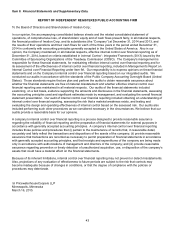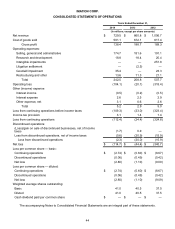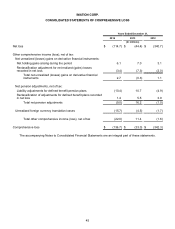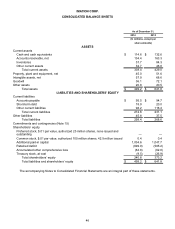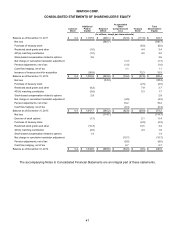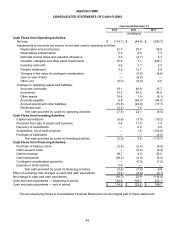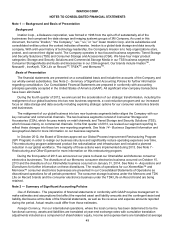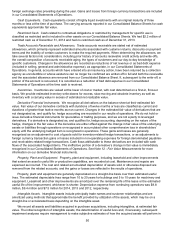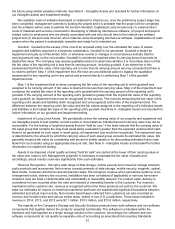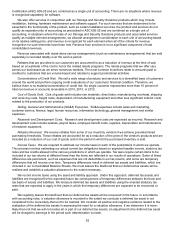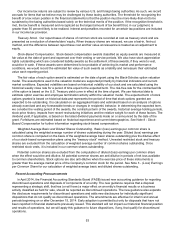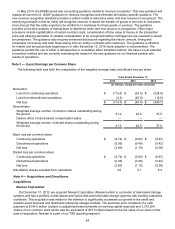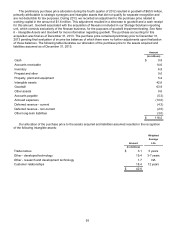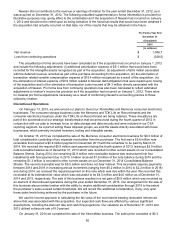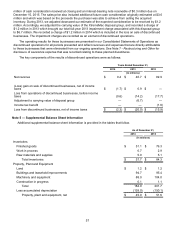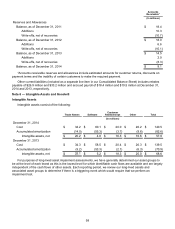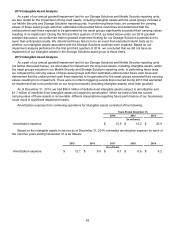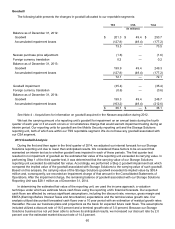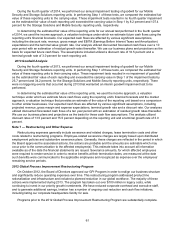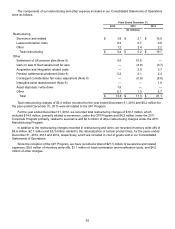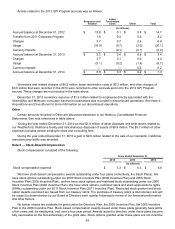Memorex 2014 Annual Report Download - page 58
Download and view the complete annual report
Please find page 58 of the 2014 Memorex annual report below. You can navigate through the pages in the report by either clicking on the pages listed below, or by using the keyword search tool below to find specific information within the annual report.53
Our income tax returns are subject to review by various U.S. and foreign taxing authorities. As such, we record
accruals for items that we believe may be challenged by these taxing authorities. The threshold for recognizing the
benefit of a tax return position in the financial statements is that the position must be more-likely-than-not to be
sustained by the taxing authorities based solely on the technical merits of the position. If the recognition threshold is
met, the tax benefit is measured and recognized as the largest amount of tax benefit that, in our judgment, is
greater than 50 percent likely to be realized. Interest and penalties recorded for uncertain tax positions are included
in our income tax provision.
Treasury Stock. Our repurchases of shares of common stock are recorded at cost as treasury stock and are
presented as a reduction of shareholders’ equity. When treasury shares are reissued, we use a last-in, first-out
method, and the difference between repurchase cost and fair value at reissuance is treated as an adjustment to
equity.
Stock-Based Compensation. Stock-based compensation awards classified as equity awards are measured at
fair value at the date of grant and expensed over their vesting or service periods. We also have stock appreciation
rights outstanding which are considered liability awards as the settlement of these awards, if they were to vest,
would be in cash. If these awards were determined to be probable of achieving its market and performance
conditions, we would record the estimated fair value of such awards as a liability and remeasure their estimated
value each reporting period.
The fair value of each option award is estimated on the date of grant using the Black-Scholes option valuation
model. The assumptions used in the valuation model are supported primarily by historical indicators and current
market conditions. Expected volatilities are based on historical volatility of our stock and are calculated using the
historical weekly close rate for a period of time equal to the expected term. The risk-free rate for the contractual life
of the option is based on the U.S. Treasury yield curve in effect at the time of grant. We use historical data to
estimate option exercise and employee termination activity within the valuation model. The expected term of stock
options granted is based on historical data and represents the period of time that stock options granted are
expected to be outstanding. It is calculated on an aggregated basis and estimated based on an analysis of options
already exercised and any foreseeable trends or changes in recipients’ behavior. In determining the expected term,
we consider the vesting period of the awards, the contractual term of the awards, historical average holding periods,
stock price history, impacts from recent restructuring initiatives and the relative weight for each of these factors. The
dividend yield, if applicable, is based on the latest dividend payments made on or announced by the date of the
grant. Forfeitures are estimated based on historical experience and current demographics. See Note 8 - Stock-
Based Compensation for further information regarding stock-based compensation.
Weighted Average Basic and Diluted Shares Outstanding. Basic (loss) earnings per common share is
calculated using the weighted average number of shares outstanding during the year. Diluted (loss) earnings per
common share is computed on the basis of the weighted average basic shares outstanding plus the dilutive effect
of our stock-based compensation plans using the “treasury stock” method. Unvested restricted stock and treasury
shares are excluded from the calculation of weighted average number of common shares outstanding. Once
restricted stock vests, it is included in our common shares outstanding.
Potential common shares are excluded from the computation of diluted (loss) earnings per common share
when the effect would be anti-dilutive. All potential common shares are anti-dilutive in periods of net loss available
to common shareholders. Stock options are also anti-dilutive when the exercise price of these instruments is
greater than the average market price of the Company's common stock for the period. See Note 3 - (Loss) Earnings
per Common Share for our calculation of weighted average basic and diluted shares outstanding.
Recent Accounting Pronouncements
In April 2014, the Financial Accounting Standards Board (FASB) issued new accounting guidance for reporting
discontinued operations and disposals of components of an entity. The new guidance requires that a disposal
representing a strategic shift, that has (or will have) a major effect on an entity’s financial results or a business
activity classified as held for sale, should be reported as discontinued operations. The new guidance also expands
the disclosure requirements for discontinued operations and adds new disclosures for individually significant
dispositions that do not qualify as discontinued operations. The amendments are effective for interim and annual
periods beginning on or after December 15, 2014. Early adoption is permitted but only for disposals that have not
been reported in financial statements previously issued. This standard will not impact our historical financial position
and results of operations, but we will apply this guidance to future dispositions, if any, that qualify for discontinued
operations.


